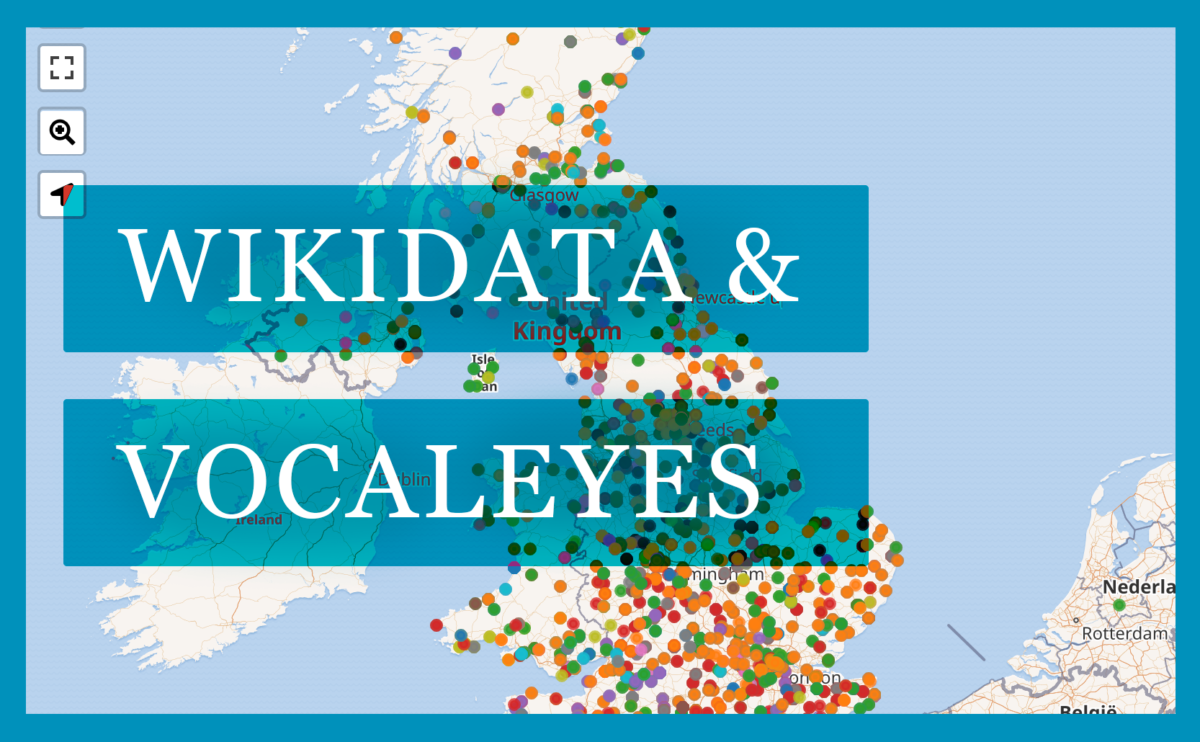By Richard Nevell, Programme Manager for Wikimedia UK
VocalEyes plays a vital role in making arts and heritage accessible for blind and visually impaired, D/deaf, hard of hearing, and neurodivergent visitors. They do this in a range of ways, including training and collaborating directly with arts and heritage organisations. They also conduct research on how various sectors are making their venues accessible.
In 2022, VocalEyes undertook ‘Heritage Access 2022’ – a survey of what information museums and heritage organisations share about accessibility on their websites. Before you visit a place, it is important to know if there are facilities such as accessible toilets, or braille displays. More than 60 volunteers were involved in collecting information about 2,258 sites across the UK. You can explore the results on the VocalEyes website.
VocalEyes invited Wikimedia UK to participate in the project, specifically to help share the data. Both organisations felt that this could be a valuable addition to Wikidata, the open source database attached to Wikipedia which helps keep its content updated. It was not only an opportunity to share accessibility information, but also to explore how Wikidata and the Wikimedia projects present this information.
Sharing the data
Putting accessibility information on Wikidata has a few benefits. Firstly, it presents the information in structured, machine-readable form so that search engines can pick it up. Secondly, once this information is in Wikidata, it can be circulated around its sister projects. For example, we are discussing with the Welsh Wicipedia whether they can adapt their infoboxes that appear in Wikipedia articles to include information about accessibility. And thirdly, because Wikidata has other information you can run custom queries to explore the data further.
Our first step was to work out what information to share. Because the VocalEyes dataset was based on information from organisations’ websites it is possible that the sites may be out-of-date or not include accessibility information. We decided to include positive information, e.g. this place has blue badge parking. This meant we were sharing positive characteristics and didn’t penalise organisations who may have had accessible facilities but didn’t advertise it.
We also needed to work out what information Wikdiata could handle. VocalEyes collected lots of information relating to things such as noisy environments, lighting levels, audio guides, and floor surfaces. Some of the difficulties here are that if you are sharing information about some of these things that will vary around a site. Parts of a site may be wheelchair accessible, but not all of it. While you can add qualifiers to information in Wikidata to add nuance, when that information is reshared outside of Wikimedia sites the nuance is often stripped away. So we needed to make sure we presented straightforward information so that if it was reused it is less likely to be misrepresented.
Ultimately, we decided to share information relating to:
- Blue badge parking on-site
- The presence of accessible toilets
- The presence of Changing Places toilets
Once we had worked out what to share, then we needed to map the information onto Wikidata.
Important progress, with more to learn
As we began matching the museums and heritage sites in the VocalEyes dataset to Wikidata, it became clear that some places didn’t have an entry yet. Of the 2,258 sites, 107 didn’t have an entry in Wikidata, and more didn’t have Wikipedia pages. For these new entries, we were able to add locations and website links – useful for anyone who may want to write a Wikipedia article and is looking for somewhere to start.
What stood out most is how little information Wikidata, and by extension Wikipedia, has about accessibility. For museums and heritage sites in the UK we were essentially starting with a blank slate.
In Wikidata there was no entry about accessible/blue badge holder parking or Changing Places toilets. While there was an entry about accessible toilets, only three places in the UK had information about these facilities (two train stations and a hospital). By adding this information we have established a framework for future information sharing. The links below allow you to explore the data on a map:
- Map of sites with accessible toilets
- Map of sites with accessible/blue badge parking
- Map of sites with Changing Places toilets
While Changing Places and Blue Badge schemes are UK specific, it is worth noting that an accessible toilet is a broader idea and that the lack of information is not UK specific. The map of places with accessible toilets is now mostly about the UK, because of the data from VocalEyes.
It is also an opportunity to reflect on what other information Wikidata could host relating to accessibility. While there is some provision for information about physical accessibility, especially relating to wheelchair accessibility, there doesn’t seem to be an infrastructure for expressing what is available to support people who are neurodiverse. This approach can be used for other places, such as public transport, libraries, and hospitals.
We are grateful to VocalEyes for involving Wikimedia UK in this work, and we strongly support the sharing of this information. We hope that this can lead to more people sharing information around accessibility.






